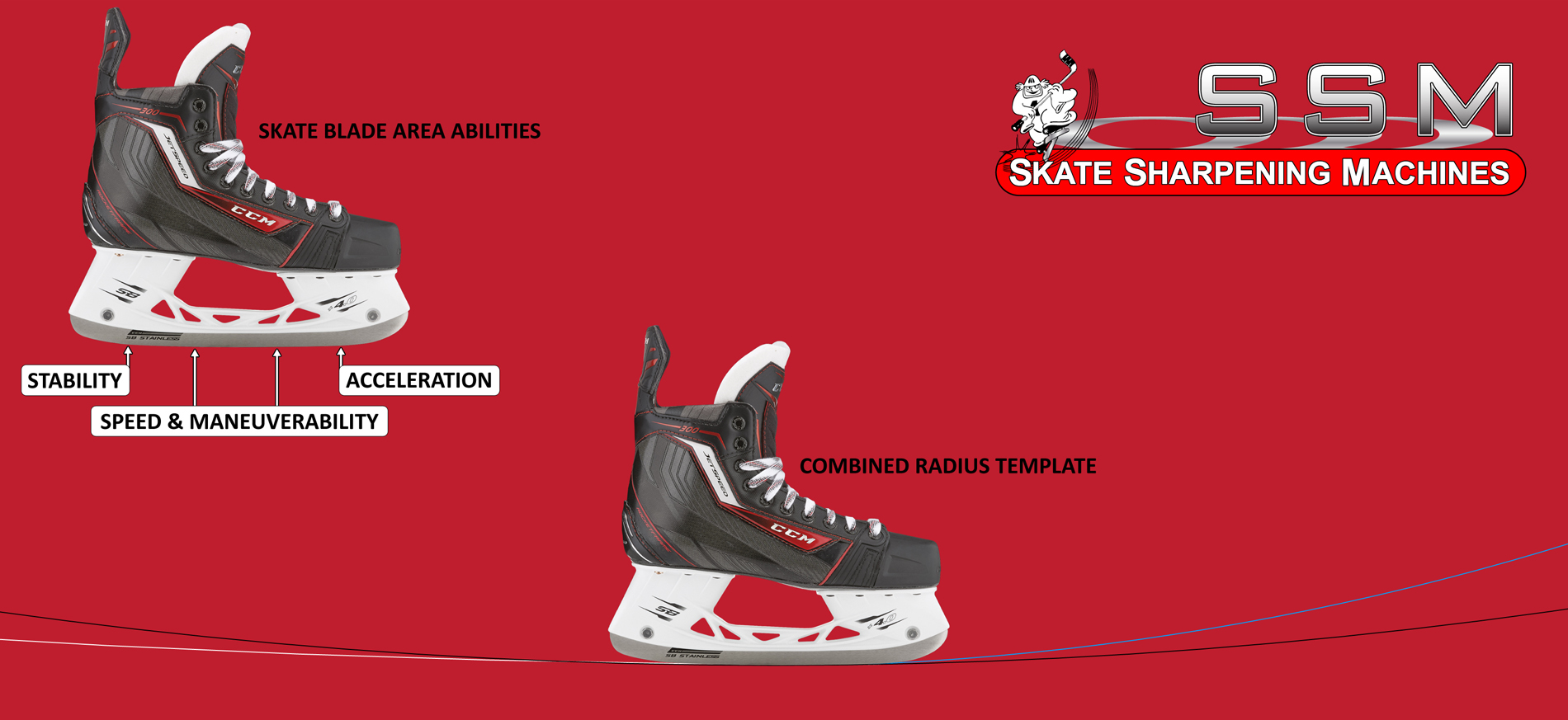Contour a skate
Shape the skate blade
Here are the basics on contouring / profiling of a skate
What is skate profiling
Contouring or profiling is when you alter the shape of the skate blade lengthwise to maximize your skating potential (one usually speaks of a profile radius with a measure in foot or meter). New skates can have a mismatched shape from start. We recommend serious skaters to profile their new skates. Also as you do the regular sharpening of skates (flat or with a ROH, radius of hollow) you will eventually need to reshape the profile of the skate blade. Therefore profiling is needed 1-2 times every season.
Factory-made shapes
When you buy a new pair of skates they have some given radius shape. Different brands uses different shapes:
Ice hockey skates range between 6'-13' and goalie skates range between 22'-30'.
Figure skates range between 7'-8', while more expensive models combine 2-3 different radiuses.
Bandy skates are basically flat from factory, they need to be contoured to a radius shape in the range 4m-8m, while goalie skates should be around 6m.
The short track range is 4m-15m, the long track range is 17m-27m and the long distance skates range is 30m-40m.

Radius shape attributes
To improve your skating ablilities it is important to find a shape/profile that suits your skating style. Things to consider when speaking about profiling are acceleration, speed, maneuverability, stability and energy consumption. In general one can say that: A larger radius gives more ice contact. This gives higher top speed and better stability, and it is more energy efficient. However, the acceleration and maneuverability will be decreased. A smaller radius leads to increased friction (more weight on a small area). This will increase maneuverability and acceleration at the cost of top speed, stability and energy consumption.
General recommendation
It is most common to use a single radius profile on a skate blade. When you profile an ice hockey skate you can alter 60% of that skate blade (the toe and heel part should be left alone). Young children who already know how to skate should have a large radius of around 6 m. As they get older and improve they should decrease the radius to 5 m. The next step would be a radius of 4 m (13'), this is when they are around 15 years old.
A general rule used in Europe to find a suitable single radius profile for adult ice hockey players, is to divide the body weight (in kg) with 2π (6.28). An example would be to take 75kg/6.28 which gives 11,9' (then you round off to the nearest full feet). This means that 60% of the skate blade (also known as middle area) should have a 12' radius shape.
Finding the perfect profile requires a lot of testing.
Pitch / Pivot point
The lowest point on the skate when you are standing on the ice is called the “pivot point” or “balance point”. This point is normally in the middle of the skate blade but can be moved forward or backward to change the posture of the skater (your “pitch” or angle against the ice).
These angles are called forward lie, neutral lie or backward lie where forward and neutral are most popular. Leaning forward is more tiresome but will increase acceleration.
Moving a radius towards the rear on the skate blade will give you a forward lean.
Using a flat surface
There is also the possibility to add a short flat surface (4-6 cm) to the skate blade shape. This was more common before, nowadays most use radius shapes all over the skate blade. We do recommend children who is learning to skate to use a flat surface as they get a better balance and can rest their legs a bit more.
A flat surface is optimal as long as it is in the correct angle against the ice, which is seldom the case. A radius shape will always be in the correct angle against the ice. It will also make it easier to turn in the skating direction. Moving a flat part towards the front of the skate blade will give you a forward lean.

Combining radius shapes
When skating, different parts of the skate blade impart different properties. The front part is used for acceleration, the middle part is for speed and maneuverability and rear part is for stability. By combining several different radiuses aligned at specific angles, one can optimize the performance in every area. Using these kind of templates are more for professional player/skaters.
Make sure to check out our new combined template called Optimal-NC, which is using a completely new way of thinking.